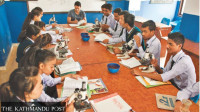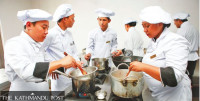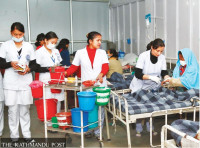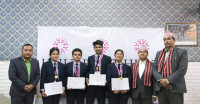Miscellaneous
How PR seats are allocated
With almost all the results of the first-past-the-post polls coming out, attention has shifted to the Proportional Representation vote obtained by the parties.
With almost all the results of the first-past-the-post polls coming out, attention has shifted to the Proportional Representation vote obtained by the parties.
According to the Election Commission, votes received by the parties would be collected from all the constituencies separately for calculating seats to be allotted to each party for representation in the House of Representatives and provincial assemblies.
A party needs at least three percent of the total valid votes nationwide to get a PR seat in the House. In order to have representation in a provincial assembly, a party requires at least 1.5 percent of valid votes in the particular state.
The EC will then remove the votes received by the parties below the threshold, lowering the total votes for calculation as 100 percent. This will benefit the parties getting votes above the set threshold.
“The EC will use Sainte-Lague formula to decide the PR seats for each party,” said Geeta Prasad Timsina, joint attorney general at the EC.
Under this system, each party’s votes are divided by a sequence of odd numbers (1, 3, 5, 7, 9, 11 and so on) until enough quotients are found to allocate all 110 seats of
the House.
In case of provincial assemblies, votes are divided by these odd numbers until enough quotients are found to allocate the total number of seats to be represented through PR in each province, according to Timsina.
The seats to be available for the parties under the PR system will differ based on the number of seats in each province. For example, in Province 6 there are 16 PR seats while 44 will be represented in Province 3 under the system.
The seven assemblies will have a total of 550 members represented through both the FPTP and PR systems. There are 49 parties in total in the PR fray. But their number varies from province to province. As many as 18 parties contested the PR elections in Province 6 while the number is 31 in Province 3, according to the poll authority.
In the two elections held together on November 26 and December 7, a total of 10,587,521 voters cast their ballot in two phases. The total number of listed voters is 15,427,938.




 5.62°C Kathmandu
5.62°C Kathmandu









